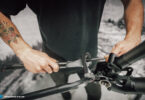If you want to minimise mechanical issues and costly servicing, it pays to look after your dropper post. We share some secrets on how to keep it working at its best.
You’ve made your choice, having read our ’ Best Dropper Post of 2020’ group test, and purchased a shiny new dropper for your bike. It’s time to find out how to keep it working at it’s best. Everyone knows that the riding rule book says you should clean and lube your chain after every ride, but what about the humble dropper post? Expensive, hard-working and sitting directly in the line of fire from all the mud, grit and water from your back wheel, your dropper post is expected to survive it all. But if it has to suffer all that abuse without any maintenance it will inevitably fail, regardless of how good the design. It’s not easy being a dropper post.
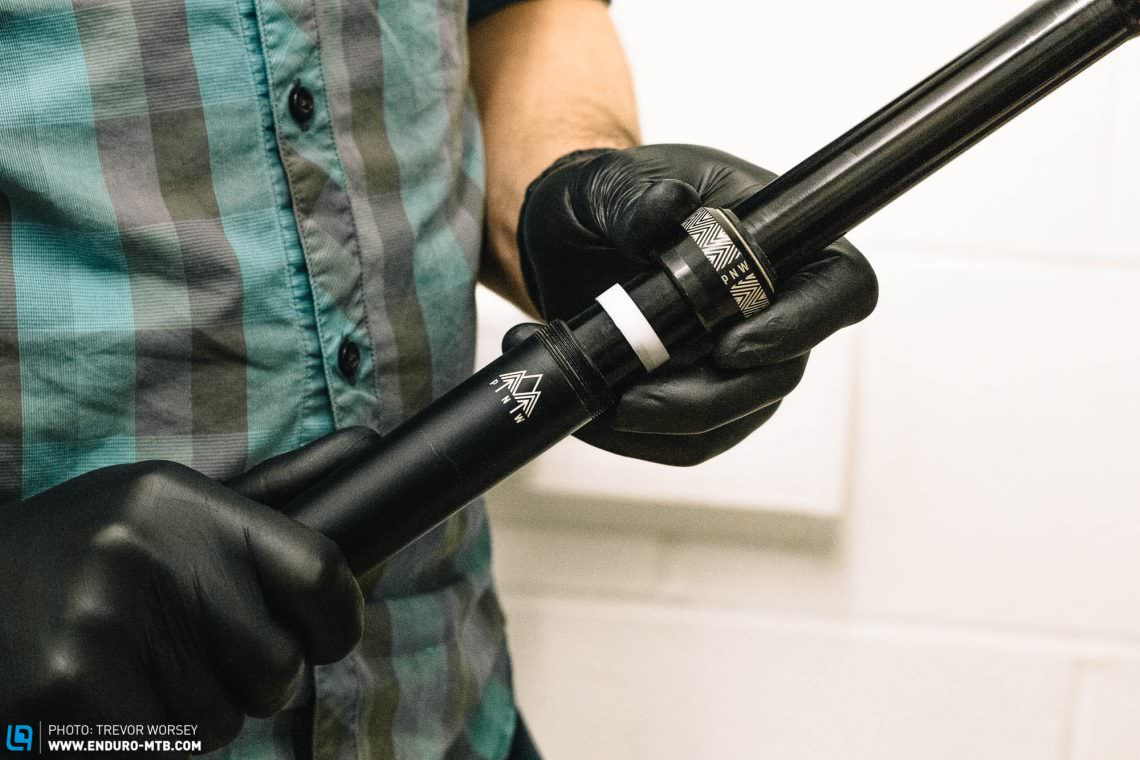
There is a better way. With some light maintenance you can significantly prolong the life of your dropper post. We talk you through the essential post-ride care and answer some common questions about how to look after your dropper.
Different designs, same problems
There are many different designs of dropper posts on the market and all have their own unique service schedules and peculiarities. But most dropper posts share the same basic components like seals, bushings, actuators and cables which will require similar servicing routines to get the best from them.

How to look after your dropper post
The best way to think about looking after your dropper post is to consider it as a suspension unit. You have a smooth post surface sliding past a wiper seal that cleans off any mud and debris. Inside most dropper posts, there will be two components, a damping cartridge and an air spring that pushes the post back up again. While the internals of most posts are often not user-serviceable, there is still a lot you can do to prolong the life of your dropper post.
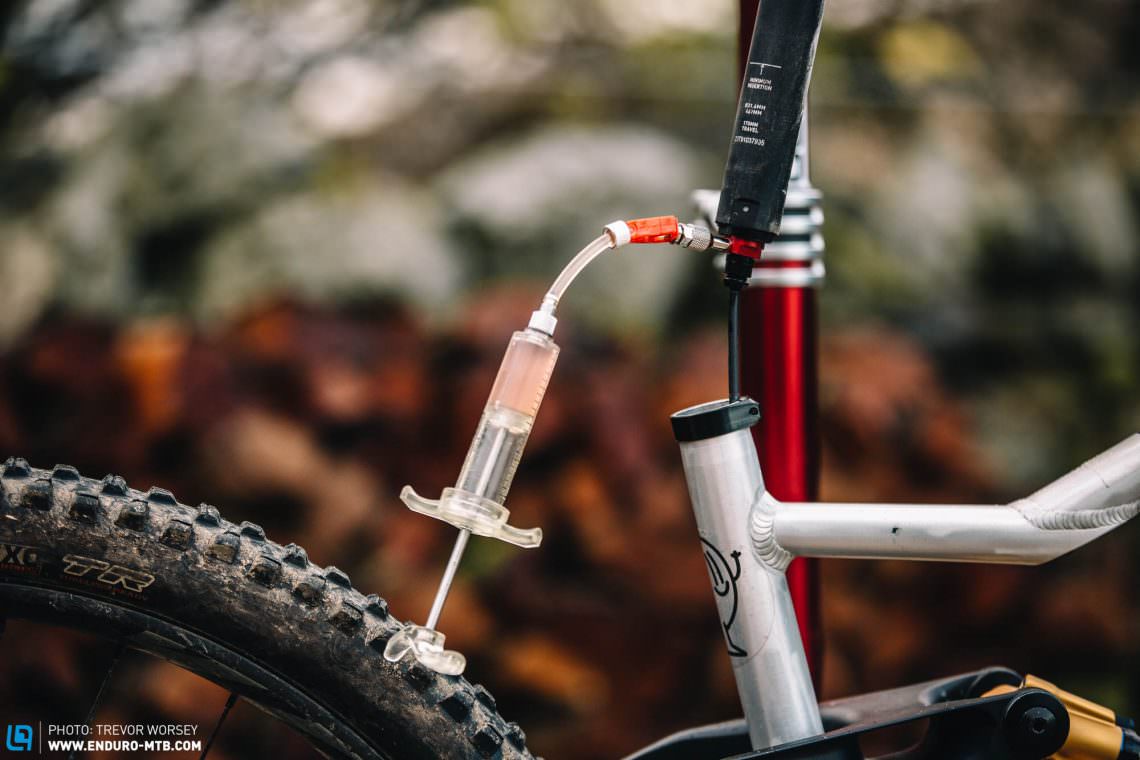
Post-ride service of your dropper post
The best thing you can do to prolong the life of your dropper seat post is to keep it clean. After every ride gently wash off any mud and grime from the post shaft. Just like all the sensitive parts of your bike, do not pressure wash the wiper seal of your dropper post. To keep the main wiper seal in good working order, it is recommended to apply a small amount of suspension lube to the clean seal to keep it lubricated. Stay away from degreasers or penetrating oil as they will strip out the factory grease from the wiper seal and reduce its longevity.

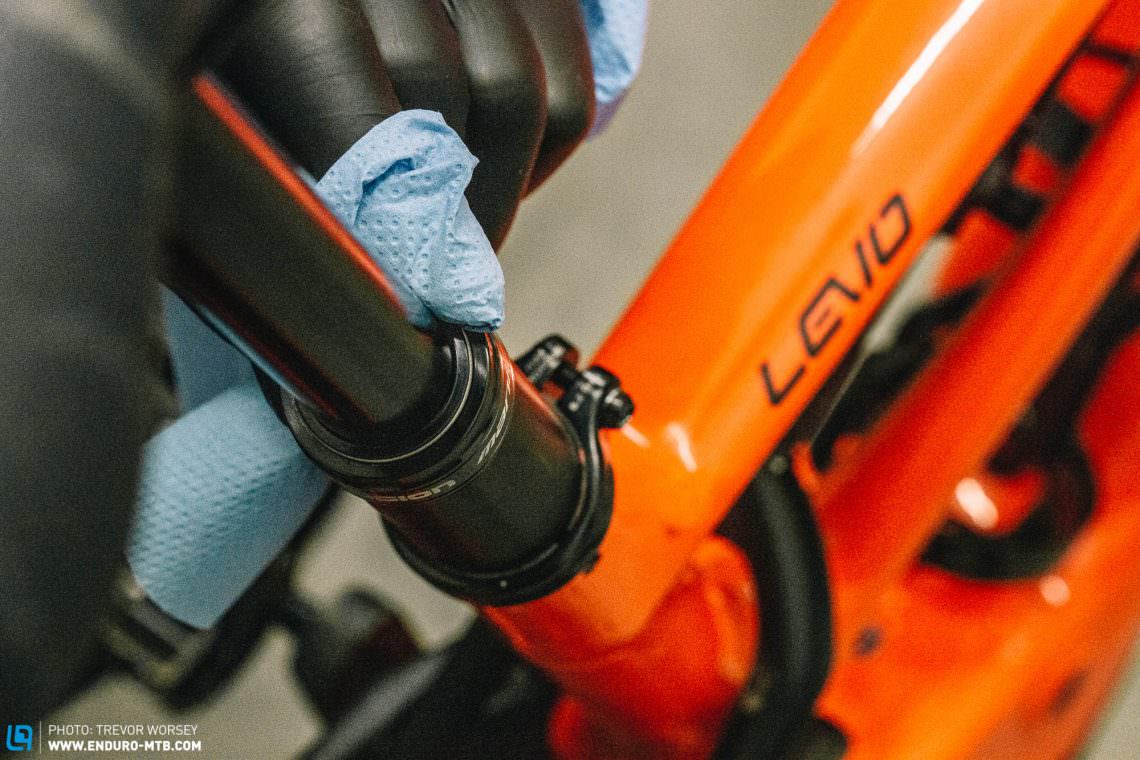
Periodic service of your dropper post
If you keep on top of the post-ride maintenance, you are already doing a lot to keep your dropper in good working order. Most manufacturers recommend that you also perform periodic servicing, the frequency of which will depend on the conditions you ride in. Most dropper posts have a seat collar that can be removed, allowing access to the main wiper seal. We highly recommend regular cleaning and lubrication under the wiper seal to keep your post in the best working order. To see what maintenance is suggested for your dropper post, most manufacturers also have a wealth of online service guides and videos to guide you through the particular service requirements of your post.
Below you will find a table of the recommended service intervals recommended by popular manufacturers.
| Manufacturer | Model | Clean, inspect and lubricate | Full service* |
|---|---|---|---|
| Fox | Transfer | Every ride | Every 125 hours |
| Bike Yoke | Revive | Every ride | Every 6 months |
| RockShox | Reverb | Every ride | Every 200 hours |
| KS | Lev | Every ride | Every 6 months |
| Crankbrothers | Highline | Every ride | Every 150 – 175 hours |
*The extent of the service depends on each post design. Some dropper posts require simple seal lubrication, while others require the post to be sent away for a full rebuild. Please check your owner’s manual for more details.
Don’t forget to service the dropper post actuator
Nearly all internally routed dropper posts, with the exception of hydraulic and wireless options, feature a mechanism on the base of the post where the steel actuator cable joins the post. You might be surprised at how much water gets inside your frame from washing it and just like the bottom bracket, the seat post actuator is exposed to this water. We recommend removing the post from the frame at least once every season to clean and lube the actuator to keep it smooth and trouble-free. While the dropper post is removed from the frame we would also check the air pressure in the air spring (if it has one). Some posts do lose pressure over time, resulting in a slower return speed. Check with your post’s manufacturer to find the correct air pressure. You can also use the opportunity to fit a new remote cable (if it has one) to keep the action silky smooth.
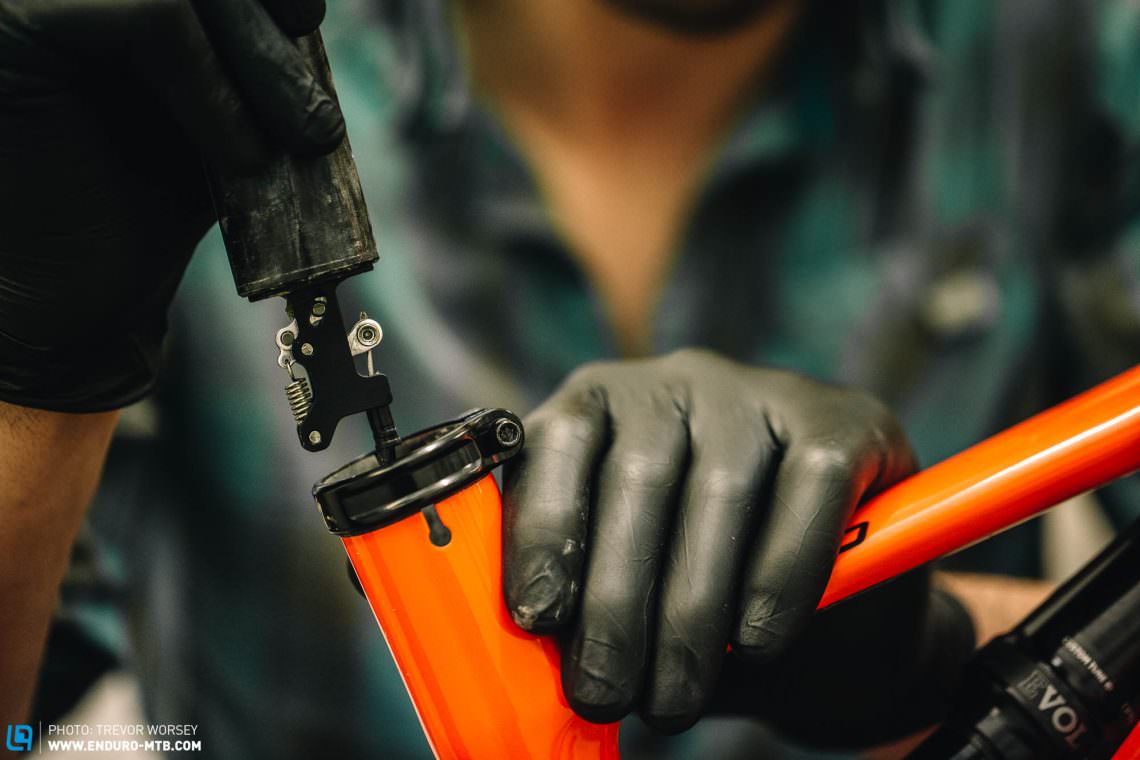
Common questions about looking after your dropper post.
Can you clamp your bike by the dropper post?
A big question we are often asked is whether it’s ok to clamp your bike in a work stand using the dropper shaft. This is a question we asked many of the key brands – RockShox, Fox and KS – and all came back with a unanimous, “Yes, that’s OK.” But there is a proviso. While a dropper post is able to withstand the force of holding a bike in a high-quality bike stand, it is best to use a clean soft cloth in between the jaws of the clamp and the dropper post shaft to protect the machined surface from dirt in your bike stand clamp. It is also vital that you only clamp an extended seat post. If not, the weight of the bike in the stand will extend the post and pull air past the internal seals inside the post.
Should you wrap your dropper post with a protective sleeve?
Concerned for the longevity of their dropper posts, some riders go as far as wrapping their dropper posts in a protective sleeve. This can do more harm than good, trapping water and grime and in turn causing abrasion and increasing wear on the internal wiper seal. We would not recommend using any protective sleeve around your dropper post.
Should you store your bike with the post up or down?
It’s best to store your bike with the dropper post in the extended position. All dropper posts use a spring to extend the seat upwards. In some posts, this air spring is small and held at relatively high pressure (around 200 – 250 psi). When the post is in the dropped position, that air pressure can be up to 3 times higher. Storing the bike with the dropper seat post in the down position puts significantly more stress on the internal seals and increases the chances of seal failure. We would recommend storing the post in an extended position.
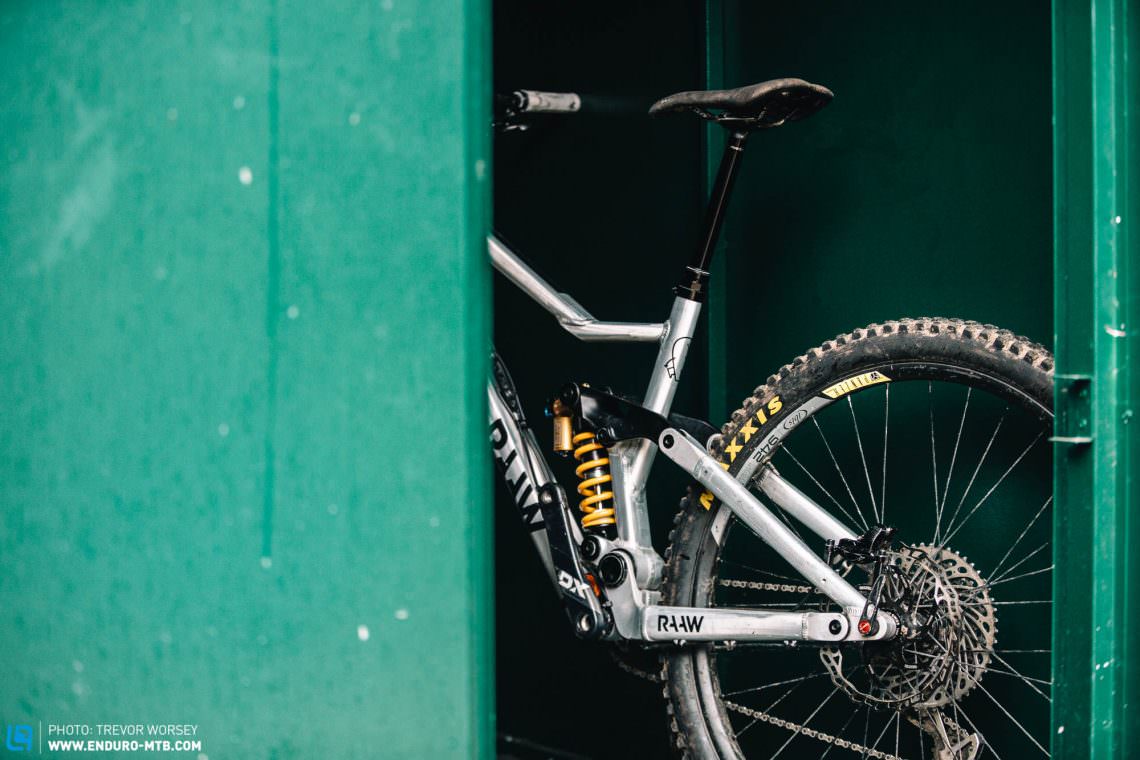
Should you pick up your bike by the saddle if the post is dropped?
A common abuse of dropper posts is lifting or hanging the bike from the saddle while the dropper is in the down position. On some droppers, this can cause air to be pulled past the internal seals inside the hydraulic mechanism, allowing it to mix with the damper oil. This causes the problematic ‘spongy’ post syndrome, where the post develops movement at the top of its travel, which requires a service. We would recommend never lifting your bike or hanging it from a seat in the down position. Some chair lifts at bike parks will hang your bike from the seat, so be sure to extend your dropper seat post before mounting your bike on it.
So that’s it. With these simple tricks, we’re sure that you can extend the life of your dropper post. But if your dropper is beyond simple maintenance or you are just looking for a new one, we’ve tested the best models for you.
Did you enjoy this article? If so, we would be stoked if you decide to support us with a monthly contribution. By becoming a supporter of ENDURO, you will help secure a sustainable future for high-quality mountain bike journalism. Click here to learn more.
Words & Photos:







